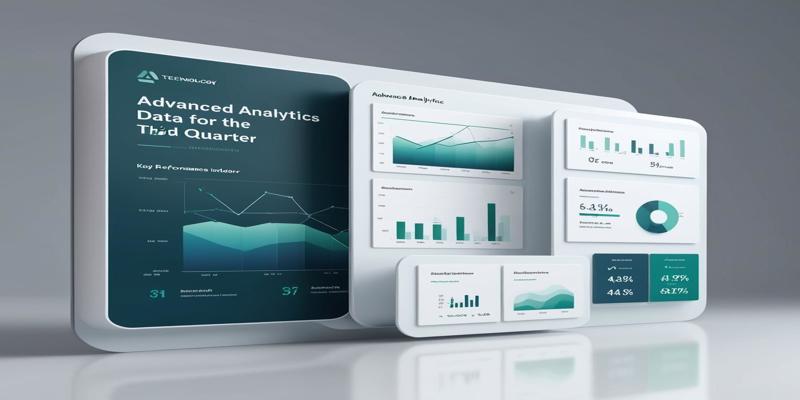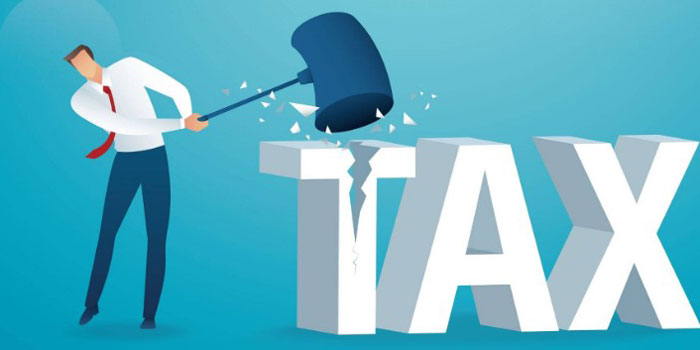Navigating Financial Freedom: A Comprehensive Guide to Consolidated Credit Debt Relief
May 09, 2024 By Susan Kelly
What Is Consolidated Credit Debt Relief
 Consolidated Credit debt relief represents a beacon of hope for individuals deep in debt, offering a lifeline to those struggling to regain financial stability and independence. In essence, Consolidated Credit debt relief encompasses a range of services and solutions designed to help individuals overcome the burden of debt and pave the way towards a brighter financial future.
Consolidated Credit debt relief represents a beacon of hope for individuals deep in debt, offering a lifeline to those struggling to regain financial stability and independence. In essence, Consolidated Credit debt relief encompasses a range of services and solutions designed to help individuals overcome the burden of debt and pave the way towards a brighter financial future.
At its core, Consolidated Credit debt relief aims to provide individuals with the tools, resources, and support needed to effectively manage and eliminate their debt. This may involve consolidate many debts into one debt, more manageable payment, negotiating with creditors to reduce interest rates or fees, or providing financial education and counseling to empower Individuals make informed decisions about their finances.
What Are The Types of Comprehensive Credit Debt Relief
 One of the primary forms of comprehensive credit debt relief is debt consolidation. This involves consolidating multiple debts, like credit card balances or some personal loans, to make a single one, more manageable payment. By consolidating debt, individuals can simplify their debt finances and potentially secure lower interest rates, reducing the overall cost of borrowing. Debt consolidation simplifies the repayment process, making it easy for individuals to stay organized and focused on their goal of becoming debt-free.
One of the primary forms of comprehensive credit debt relief is debt consolidation. This involves consolidating multiple debts, like credit card balances or some personal loans, to make a single one, more manageable payment. By consolidating debt, individuals can simplify their debt finances and potentially secure lower interest rates, reducing the overall cost of borrowing. Debt consolidation simplifies the repayment process, making it easy for individuals to stay organized and focused on their goal of becoming debt-free.
Another common approach to comprehensive credit debt relief is debt settlement. Debt repayment involves negotiation with the relevant parties outstanding debts for less than the total debt owed. This usually requires individuals to make lump-sum payments or agree to structured repayment plans to satisfy their debts. Debt settlement may be an effective strategy for individuals facing financial hardship or those unable to repay debt in full. However, it's essential to proceed with caution, as debt settlement can have implications for credit scores and tax liabilities.
Credit counseling is also a key component of comprehensive credit debt relief. Credit counseling involves working with certified financial professionals to develop personalized strategies for managing debt and improving financial literacy. Credit counselors provide guidance on budgeting, debt repayment, and credit management, empowering individuals to take control of their finances and make informed decisions about their future. Through one-on-one counseling sessions and educational resources, credit counseling equips individuals with the tools and knowledge they need to achieve long-term financial stability.
Additionally, debt management plans (DMPs) are often employed as part of comprehensive credit debt relief. DMPs involve working with a credit counseling agency to negotiate reduced interest rate and payment terms with creditors. Individuals make regular pay to credit counseling agency, which then distribute funds to creditors on their behalf. DMPs provide a structured approach to debt repayment, helping individuals eliminate debt more efficiently while avoiding bankruptcy or other drastic measures.
Pros and Cons of Consolidated Credit Debt Relief
On the positive side, consolidated credit debt relief offers often entails securing a lower interest rate on the consolidated loan compared to average interest rates of the individual debts. This can result in substantial savings over time, as individuals pay less in interest charges, allowing them to pay off their debts more quickly and affordably. Additionally, some consolidation programs may offer extend repayment period, reducing the monthly payment burden and providing individuals with greater flexibility in managing their finances.
Consolidated credit debt relief also provides individuals with a clear roadmap for debt repayment. By enrolling in a debt consolidation program, individuals commit to a structured repayment plan, often under the guidance of a credit counselor or debt relief agency. This accountability and support can be invaluable, as individuals receive guidance and encouragement throughout their debt repayment journey, increasing their likelihood of success.
However, consolidated credit debt relief is not without its drawbacks and considerations. One potential downside is the risk of accruing additional debt. Consolidating debts into a single loan does not address the root causes of debt accumulation, and individuals may find themselves tempted to incur new debts, thereby exacerbating their financial challenges. It's crucial for individuals to exercise discipline and adopt responsible financial habits to avoid falling into the same debt trap in the future.
How To Get a Consolidated Credit Debt Relief
The first step in obtaining consolidated credit debt relief is to assess your financial situation comprehensively. This involves taking stock of your outstanding debts, including credit card balances, personal loans, medical bills, and any other liabilities. By compiling a comprehensive list of your debts, you gain clarity on the scope of your financial challenges and can better understand the amount of debt you need to consolidate.
Once you have a clear picture of your debts, the next step is to explore consolidation options available to you. Consolidated credit debt relief can take various forms, including debt consolidation loans, balance transfer credit cards, and debt management plans offered by reputable credit counseling agencies. Each option has its own eligibility criteria, benefits, and drawbacks, so it's essential to research and compare them carefully to determine which aligns best with your financial goals and circumstances.
If you opt for a debt consolidation loan, you'll need to apply for financing through a reputable lender or financial institution. The lender will evaluate your creditworthiness based on factors such as your credit score, income, and debt-to-income ratio. If approved, you'll receive funds to pay off your existing debts, consolidating them into a single loan with a fixed interest rate and repayment term.
Conclusion
In conclusion. Consolidated Credit debt relief services offer a lifeline to individuals struggling with overwhelming debt, providing essential support and resources to navigate towards financial freedom. By exploring the types of comprehensive credit debt relief available and take proactive measures to assess their financial situation, individuals can be prepared towards a best financial future and achieve lasting debt relief.

Credit Cards Annual Fee

How Much Do Taxes Cost Small Businesses?

tax implications of stock trading

Understanding the Role of a Private Banker: Is It Right for You?

Find Q3 Investments in Technology and Advanced Analytics

Techniques for High-Income Tax Payers to Save Money

AI Powerhouses of 2024: 8 Companies Driving Innovation

The role of information and communication in financial intermediation

Understanding Trial Balance: Definition, Function, and Importance

